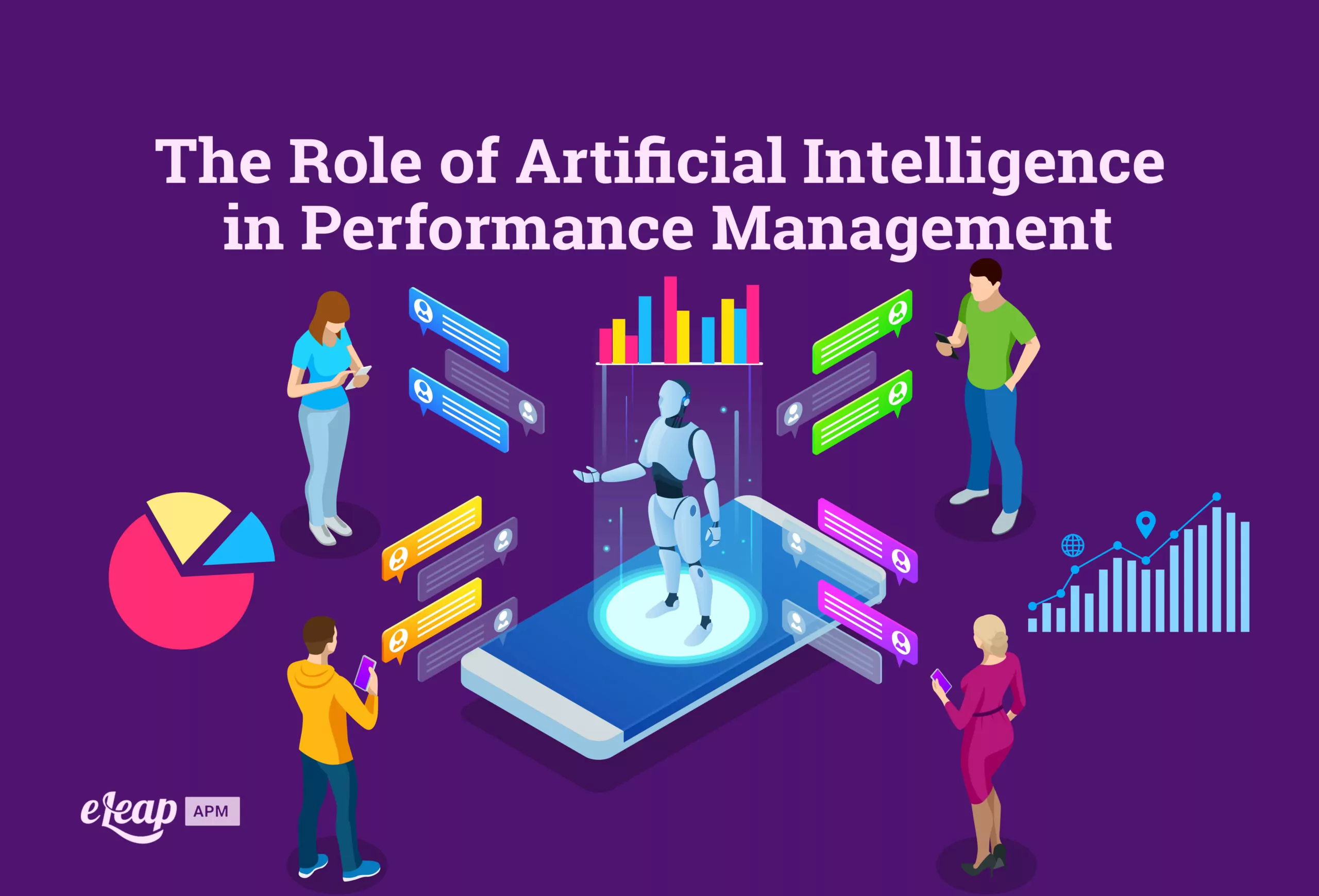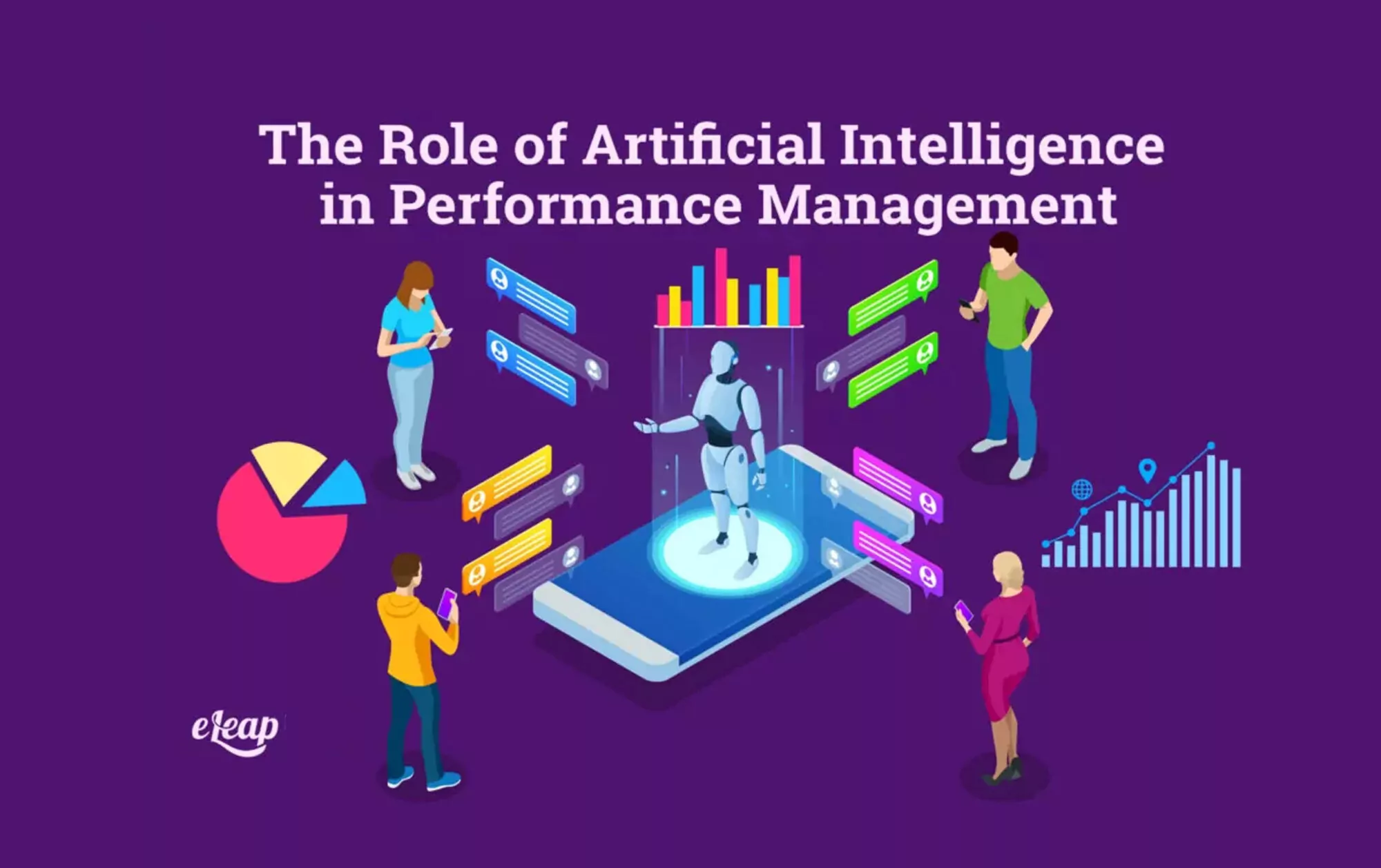The Role of Artificial Intelligence in Performance Management

Long before artificial intelligence took over the workplace, data collection had been a mandatory element of performance assessments. Reviewing an employee’s performance gives us insight into what they’ve accomplished, what we believe they can accomplish, and how we can help them arrive at their goals. Explore how eLeaP’s Performance Management Platform can simplify evaluations, boost productivity, and drive measurable results.
We also analyze whether or not their performance and behaviors can contribute to an organization’s success or its failure. Other important elements include their ability to function with coworkers and their alignment with an organization’s goals.
Coming to these types of conclusions requires the collection of enormous amounts of data. However, collecting uniform amounts of data is only the beginning of these assessments.
In the past, performance management assessments consisted of one universal performance sheet. Every employee within an organization was graded based on the same set of questions and assessment sheets.
However, as the workforce changed and methods of hiring and retaining gradually morphed, it was clear that the old way of completing assessments was obsolete. A melting pot of different personalities, backgrounds, educations, and other elements has made adopting AI into the performance management sector attractive.

How Have Assessments Changed?
Present assessments consider different employee traits within an organization based on things like age, educational background, hobbies, interests, and areas of expertise. Why is such a vast amount of information required to complete an assessment?
New methods have been adopted when it comes to retaining employees and helping to align their goals with a company’s goals to form an all-inclusive relationship. The “our way or the highway” style of running a business is old news.
All of the data mentioned leads to a created profile that predicts traits and behavior patterns of workers within an organization. These profiles are used to assist an organization with the ability to view certain things from the worker’s standpoint.
By accomplishing this viewpoint, organizations can better understand how to accommodate certain workers through Artificial intelligence, predict their reactions and responses to work situations, and how to retain them or make them comfortable.
Understanding all this, it should be clear why the old performance assessment method wasn’t cutting it. All these different dynamics and data points thrown into the mix make it mandatory for fast-computing AI to analyze all this information.
AI in PMS has several other advantages. Let’s examine some of the positives and potential downfalls of using AI with Performance Management Systems.
Advantages of Using AI with PMS
1. Predictions Based on More Precise Data
Obsolete performance assessments were based on limited data and uniform performance indicators that didn’t fit all worker types. AI-based performance assessments scrape massive amounts of data to provide accurate projections based on past and present performance.
The current assessments also take into account the entire career of the employee. Coupling this with assessments from current organizations paints a clear picture of that worker’s potential for success within the current workplace.
Assuming any potential downfalls are predicted, management can address these projections and potentially avoid them. This leads to substantially higher levels of employee retention.
2. Never-Ending Assessment Based on Real-Time Data Analysis
The days of the six-month review and yearly assessment are gone. AI has allowed organizations to conduct a perpetual assessment that uses fresh data to constantly paint a picture of potential employee response and performance.
This ongoing assessment makes organizations more flexible with incredibly fast response times. Based on lightning-fast data analysis, managers can make quick work delegation, project management, and team pairing.
3. Better Management
AI has undoubtedly led to more efficient management within organizations. Managers can now cross-reference their judgment calls against data. Their feedback can be checked for accuracy when it comes to critiquing worker performance.
Managers also can use pinpoint data when referring to metrics and areas of improvement. After referring to the AI analysis, there’s no question when a manager offers advice or accolades.
The outcome for managers in this situation is simple. More data leads to more efficient performance.
Disadvantages of AI with PMS
1. Price
Taking advantage of AI in the performance assessment process comes with a high price tag. It’s not just the initial deployment of this technology that requires investment.
Any malfunction of the system or its hardware will also require a remedy. These remedies don’t come with a low price point and require advanced technological maintenance and service methods.
2. Lack of Human Element
AI can only work as efficiently as the coding used during program creation. This could potentially lead to employee frustration in certain situations.
For example, what is the next course of action if a worker has objections about their assessment? The lack of human element and versatility can lead to a disconnected worker and management communication and relationship.
Suppose AI uses data from connected devices to report the amount of time a worker spends away from their desk. In that case, this could lead to an unfavorable report. Sometimes this unfavorable report is not warranted, especially if the worker is engaged in other diligent projects or activities.
3. Question of Ethics
Some people see the vast collection of data and conclusions this data leads to as unethical. The information scraped against a worker to reach a final assessment leads to a feeling of intrusion.
What is the outcome if certain data used to perform these assessments lead to an inaccurate picture of the worker’s performance or work habits? These situations can lead to a lack of trust between the employee and the organization.
Many of these algorithms use performance from prior jobs to complete an assessment. What if a hiccup in the data or inaccuracy leads to a negative report? This can lead to a question of whether the data collection is ethical.
There are clear advantages and disadvantages to using AI in the workplace. However, if PMS continues to utilize the advantages of AI algorithms, there has to be a careful balance.
A healthy mixture of data scraping combined with the watchful eye of management is key to a healthy PMS implementation. The assessment created based on AI data should be combined with a personal assessment conducted personally by management, so a human element is involved. In theory, this should lead to a fair mixture of both elements. Try eLeaP free for 30 days.